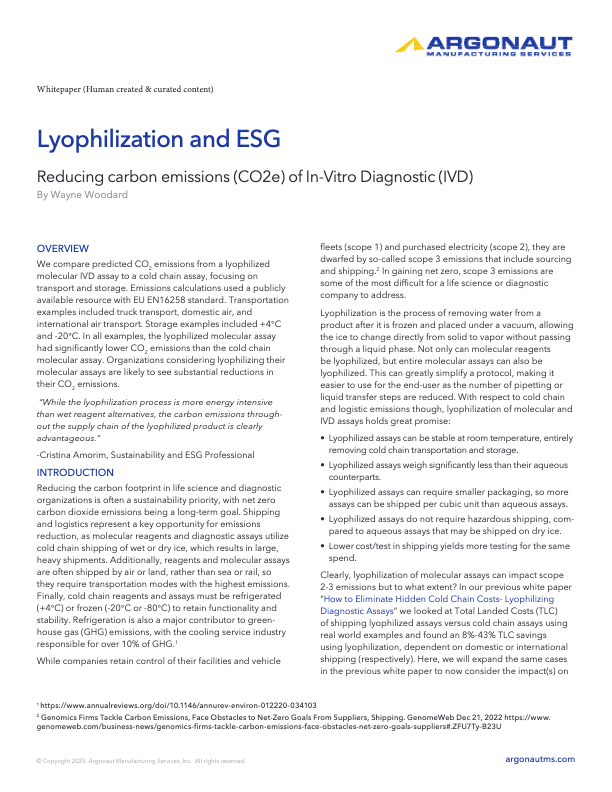Reduce IVD Reagent Carbon Footprint With Lyophilization
Reducing the carbon footprint in life science and diagnostic organizations is often a sustainability priority, with net zero carbon dioxide emissions being a long-term goal. Shipping and logistics represent a key opportunity for emissions reduction, as molecular reagents and diagnostic assays utilize cold chain shipping of wet or dry ice, which results in large, heavy shipments.
In this case study we compare predicted CO2 emissions from a lyophilized molecular IVD assay to a cold chain assay, focusing on transport and storage. Emissions calculations used a publicly available resource with EN16258 standard. Transportation examples included truck transport, domestic air, and international air transport. Storage examples included +4°C and -20°C. In all examples, the lyophilized molecular assay had significantly lower CO2 emissions than the cold chain molecular assay. Organizations considering lyophilizing their molecular assays are likely to see substantial reductions in their CO2 emissions.
In all cases of transport analyzed, lyophilized assays have dramatically lower emissions compared to cold chain logistic assays, reducing emissions by 7.9X (domestic, truck) to 15.5X (international, air).
Read this white paper to learn how you can reduce IVD reagent carbon footprint with lyophilization.
